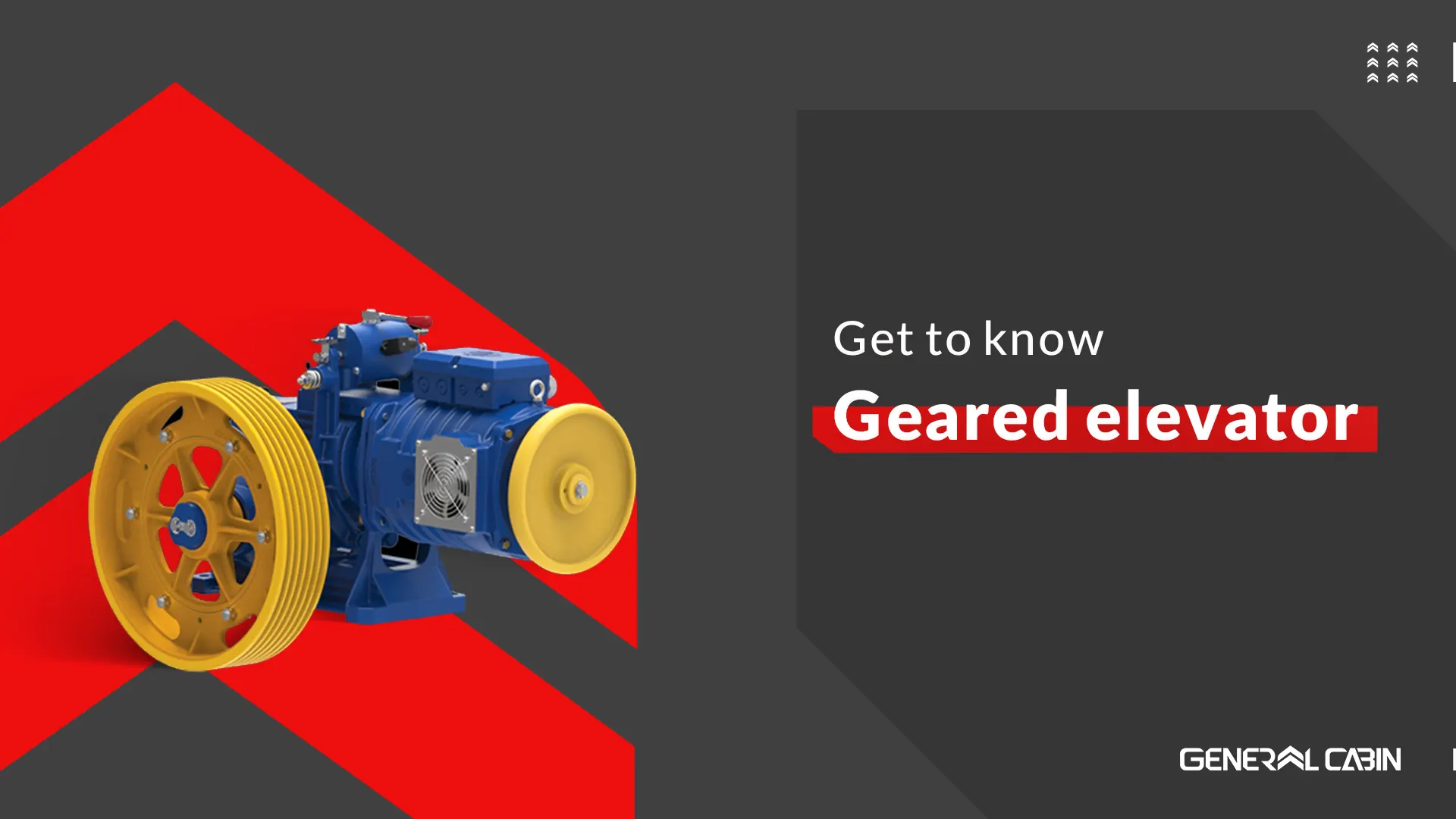
Geared Elevators
Elevators are classified into hydraulic and traction systems based on their mechanism. Traction elevators are further divided into geared and gearless types. Additionally, lifts are designed for moving goods or people with limited mobility.
In the past, equipment similar to modern traction elevators was used for moving loads and construction materials. Later, moving objects using steam power led to the development of hydraulic elevators. In these elevators, oil pressure is used for movement instead of steam.
Finally, our main focus was geared traction elevators, developed using the friction force between the wire rope and the pulley. This traction force moves the cabin between floors. Simply put, one wire rope is connected to the cabin and the other to a counterweight, with a pulley in between. The movement mechanism of the cabin is based on the balance between the counterweight and the cabin using an external force. In the past, this external force was manually provided, but with technological advancements, electric power replaced manual force. Nowadays, one end of the pulley is connected to an electric motor, and the other end links the cabin and the counterweight. Special rails for the cabin and the counterweight allow for their vertical movement.
Geared elevators are among the most common and widely used types of elevators, where a gearbox is used to control and regulate speed. In these elevators, the gearbox also serves as a reducer, lowering and regulating the high power of the motor. The purchase cost of these elevators is lower compared to gearless models, making them more widely used. In geared elevators, due to the use of an inverter device, the movement and stopping of the cabin are well controlled and regulated, resulting in smooth movement of the cabin when ascending or descending. Since the motor of geared elevators is large, a machine room is required for their installation.
As the name suggests, geared traction elevators have a gearbox connected to the motor, which moves the wire rope wheel. Due to their high speed, they are generally more suitable for tall buildings compared to gearless elevators. The speed of geared traction elevators ranges from 1.7 to 2.5 meters per second and is suitable for buildings up to 76 meters in height. The capacity of these elevators can reach up to 13,600 kilograms. One of the most significant advantages of geared traction elevators is their low installation cost.
Advantages and Disadvantages of Geared Traction Elevators
Advantages:
- Higher speed compared to hydraulic elevators is the most significant advantage.
- These elevators have very smooth and seamless movement, especially when equipped with a drive system.
- The speed of the elevator can be adjusted according to the height of the building.
- The control system of these elevators is very simple.
- Spare parts for these elevators are easily obtainable.
Disadvantages:
- In case of a problem, accessing the internal parts of the elevator for maintenance and repair is difficult.
- The initial cost of these elevators is higher compared to hydraulic elevators because many parts (about 60) are used in their construction.
- The energy consumption of these elevators is high.
- Installing these elevators requires a lot of space, which may not be available in all buildings.
- The installation and commissioning of traction elevators are complex and must be done by reputable companies.
- In case of a power outage or malfunction, passengers cannot be easily evacuated from the cabin; this requires the knowledge and skills of professional technicians.

Components of Geared Traction Elevators
- Control panel
- Motor
- Wire rope
- Governor
- Cabin and cabin doors
- Elevator landing
- Counterweight frame and buffer
- Safety gear
- Cabin buffer
- Counterweight sheave
- Hall indicator board
- Guide shoe
- Cabin guide rail
- Traveling cables
- Governor sheave at the pit
- Counterweight guide rail

Elevator Gearbox
A gearbox is a device that acts as an intermediary between the driving motor and the power consumer. Using a gearbox, torque, and speed can be adjusted, providing flexibility in the motor’s power output.
An elevator gearbox is a type of mechanical device that converts the high speed and power of the motor to lower values. In this system, the elevator motor transfers the generated force to the gearbox input shaft. In the gearbox, the gears control the amount of power and rotational speed of the motor and transfer it at a lower speed to the output shaft. After transferring the force from the output shaft to the gearbox sheave, the wire ropes move at a specific speed, moving the cabin.
The geared elevator is one of the types of traction elevators. In these elevators, the motor power is controlled and regulated by a gearbox or gears. The motor of these elevators is large, requiring a machine room for installation. The geared elevator is considered the most common type of elevator, with a longer history compared to other types, such as gearless elevators. The capacity of these elevators reaches up to about 500 kilograms, and their maximum speed is about 150 meters per minute. The energy consumption of these elevators is relatively high, and their motors produce more noise during operation.

Geared Elevator Motor
The geared elevator motor is considered the most crucial part of these elevators. The design and manufacture of these motors ensure that the generated power is first transferred to the gearbox. These motors are manufactured in single-speed and two-speed types. Components of the geared elevator motor include the electric motor, gearbox, traction sheave, and electric brake. Inside the electric motor are the rotor and stator; the windings act as the stator, and the shaft acts as the rotor. Magnetic fields created inside the electric motor cause the rotor to rotate, which turns a shaft connected to the gearbox.


